Gallery
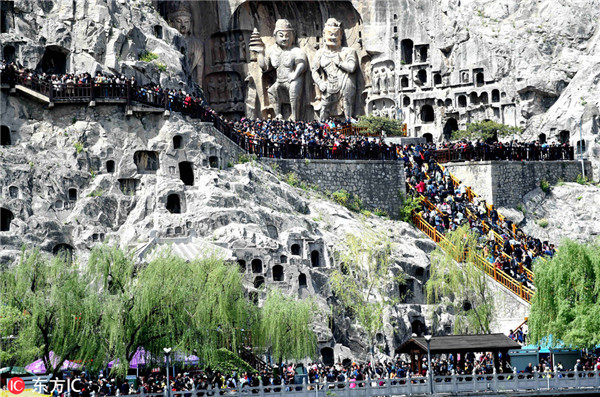
Longmen Grottoes is one of the four famous treasure troves of Chinese grotto art. Work started on the grottoes around the year 493, during the Northern Wei Dynasty (386-534), and continued for the next 400 years. Longmen Grottoes consists of more than 2,300 grottoes with 110,000 Buddhist figures and images, more than 80 dagobas and 2,800 inscribed tablets, all created between the Northern Wei and Song (960-1279) dynasties. Longmen Grottoes represent the finest examples of Chinese Buddhist art.
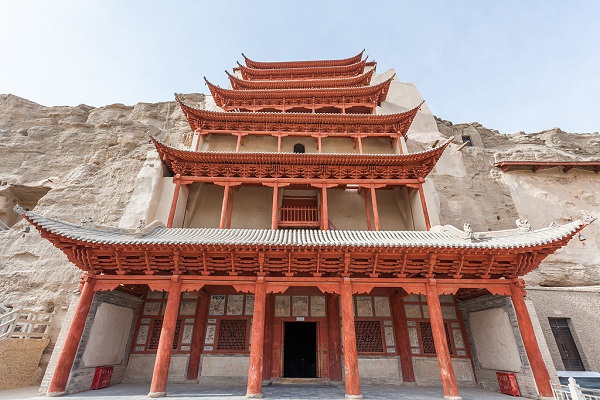
The Mogao Caves are one of four largest grottoes in China along with Maiji Caves in Tianshui, Longmen Grottoes in Luoyang and Yungang Grottoes in Datong. They are set into a cliff-face of Echoing Sand Mountain about 25 kilometers southeast of Dunhuang. This honeycomb of caves was constructed over a millennium ago, from the 4th to the 14th centuries, and represents the height of Buddhist art and the world's richest treasure house of Buddhist sutras, murals and sculptures.
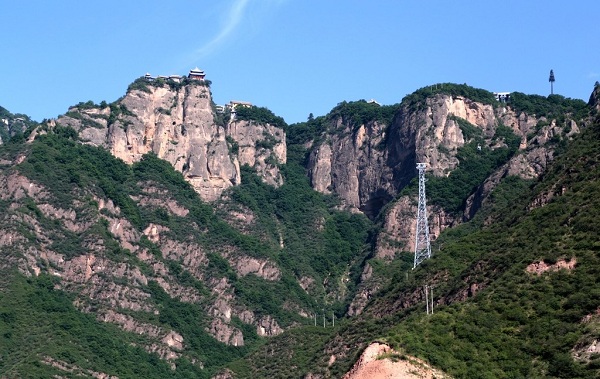
Located in Pingliang city, Gansu province, Kongtong Mountain is one of the sacred mountains of Taoism. It is the mythical meeting site between the Huangdi (also known as Yellow Emperor) and Guangchengzi. Kongtong Mountain boasts dozens of spectacular peaks. It is covered with dense forests rolling from one steep peak to another. As one of the most famous Taoist mythical places well known for its wonderful scenery, the mountain was named Kongtong, which means "emptiness, lustration and naturalness" in Taoist doctrine. Kongtong Mountain is also highlighted as a very healthy place.
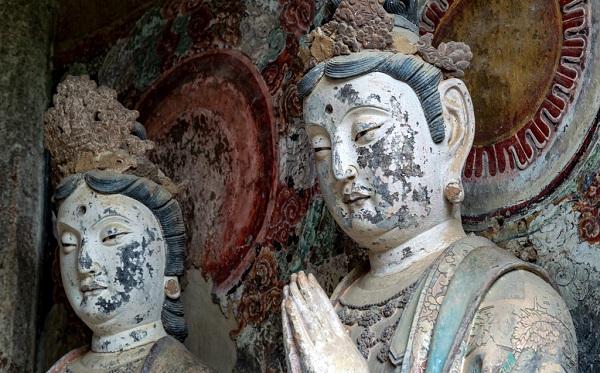
Maiji Mountain scenic area, which covers 215 square kilometers, is located in Tianshui, Gansu province. The scenic area includes many tourist attractions, such as Maiji Mountain Grottoes, Immortal Cliff (Xianren Ya) and Stone Gate (Shi Men). Maiji Mountain Grottoes, as well as the Mogao Caves in Dunhuang, Gansu province, the Yungang Caves in Shanxi province, and the Longmen Grottoes in Henan province, are listed as the four most important grottoes in China.
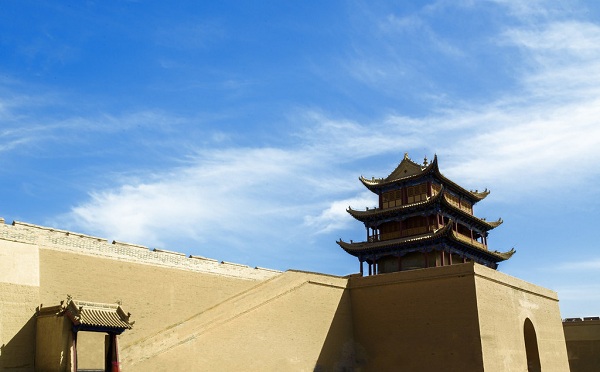
Jiayuguan, situated at the center of the Hexi Corridor, a part of the Silk Road in Gansu province, derived its name from the western terminus of the Ming Great Wall at Jiayu Pass. However, Jiayuguan's reputation stretches further. It is known as the "No 1 Strategic Pass in the World" and "the Steel City of West China", and is the only city to combine the Great Wall of China with Silk Road culture.
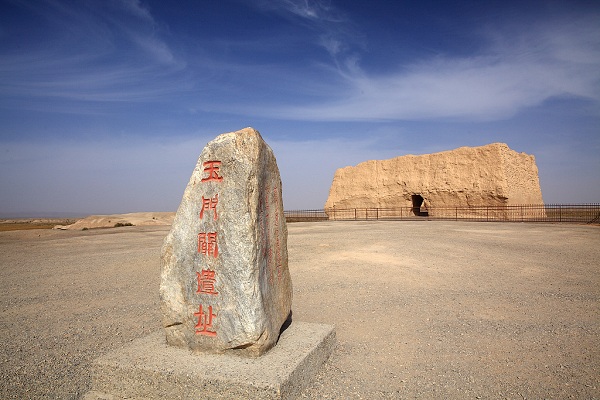
Yu Men pass was erected under the order of Emperor Wudi, around 121 BC for the sake of the providing convenience to western regions. Yumen Pass's ruins lie fairly close to Dunhuang, roughly 90 km. Today this 30 foot mud brick gate and its walls are nothing more than an ancient castle, however back in ancient times this pass was one of two passes (Yu Men Pass, and Yang Guan Pass) that protected, and ensured the safety and smooth travels for passing caravans, and visitors in and out of China via ancient Silk Road.
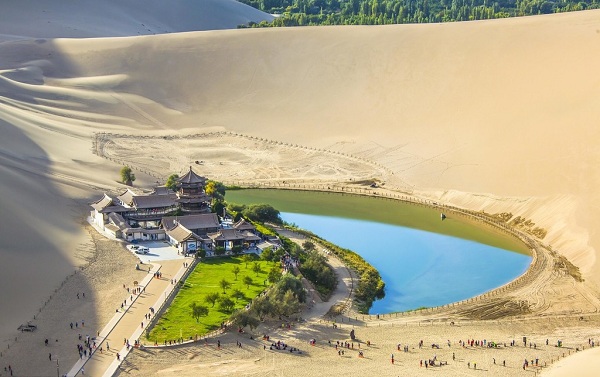
Located five km south of Dunhuang, a county-level city, in the Singing Sand (Mingsha) Mountains, Crescent Moon Spring scenic area is quite literally an oasis in the desert. The spring's name is derived from the crescent moon shape of the small pool between two large sand dunes. Although the area is extremely dry, the pool doesn't dry up as one might expect.
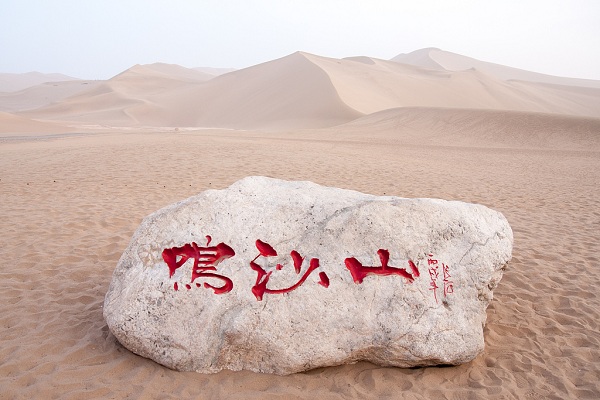
Singing Sand (Mingsha) Mountains in Dunhuang offer superb desert scenery. The dune reaches a relative height of 250 meters (820 feet). The climb to the top is not easy, but the dramatic view rewards the effort. Sliding down the dune is simple but extremely exciting- it gives out a sound like thunder or a drum-roll as the wind sweeps across the sands. The thunder-like sound is tremendous and fabulous.
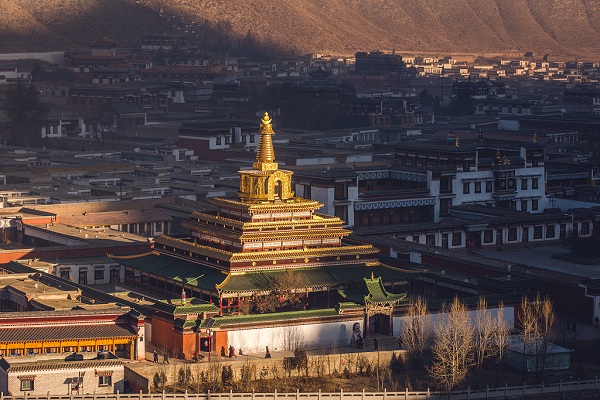
Located 280 km south of Lanzhou in Xiahe county, Labrang Monastery is one of the six great monasteries of the Gelukpa (Yellow Hat) Sect. The monastery was founded in 1709 (during the reign of Emperor Kangxi of Qing Dynasty(1644-1911)) by the monk E'Ang Zonghe, the first generation living Buddha, or Jiemuyang. It is Tibetan Buddhism's most important monastery town outside Tibet.
